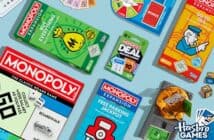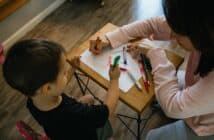Develop your child’s growth and development skills
Our Parenting World, Mummy has researched extensively and wrote numerous articles on how to stimulate and enhance your child’s growth and development which was published. I shall consolidate what I did when he was 0 to 3 years old which I would like to share with my readers.
As a first time mother to a boy and also an educationist, I am very concerned not only with the overall health of my child but important life skills like how to stimulate his motor and verbal skills. As parents, we always worry whether we are doing the right things or are we doing enough to help them have a good start in life? There are many ways to stimulate your child and it is important to start early.
From birth to 2 years old:
A baby starts to develop gross motor skills which are the movement of large muscles of the body right from birth. As parents, we can encourage the natural growth and development of our child by playing games like tummy time. This is essential to help the child develop muscles to be used later for activities such as reaching out for objects, rolling-over, crawling, throwing and writing. It helps to prevent head deformities and develop good posture.
Tips for tummy time: I will place my baby on his tummy on the bed or a play mat and encourage him to lift up or reach out while on his tummy by dangling a toy in front of him. The toys must be colourful and or a squeaky one to arouse his interest. I will also sing songs, make funny sound and talk to him to make him stay on his tummy longer.
Once he has mastered the skill of lying on his stomach, he soon begin to roll-over naturally. I will often encourage him by tapping on his side while he is still lying on his tummy with a toy and making funny sound to entice him to roll-over. When he manages to do it, I will further encourage him by praising him enthusiastically, Good boy! Good job! Sitting up comes next once he learns how to push himself up on his arms and hold his chest up like he is doing a mini push up. He is able to move into a sitting position. I will make cushions around him to make sure that he doesn’t fall. He is quite a determined child, he will keep trying until he masters each step and smiles happily at us whenever we praise him.
The next milestone is learning to crawl. This is a big step and crawling may not happen naturally if a child does not learn or able to endure lying on his stomach. Tummy time is essential to help a child to crawl later on. Crawling helps to strengthen the muscles in preparation for walking, it strengthens the arms, legs and back muscles to keep the child from falling on the floor.
Tips for crawling: I find that an effective way to encourage baby to crawl from one place to another is by putting toys just beyond his reach, he will attempt to move forward to reach out for the toy. To make it more interesting and challenging for my baby, I will also put up obstacles like pillows or cushions and he will try to navigate away from these obstacles to get the toy. This actually helps to improve his nimbleness, speed and also boast up his confidence. He gets excited and happy when he managed to get his toy.
As his arms and legs muscles grow stronger and master the art of co-coordination from the above activities, he surprises us one day by standing while holding onto the furniture for support and we knew that he is on his way to walk. How exciting it can be to see my little boy walking, that is a major milestone for a child.
Tips for walking: Once I see Vincent starts to stand and holding onto a support to balance attempting to walk, I will stand or kneel in front of him stretching out my hands to encourage him to move forward by calling his name. Encourage and praise him for every little step that he makes. The key is not to rush him, be patient. Give him time to explore and co-ordinate his body movement. It is important that his surroundings are safe. It is best to walk bare-foot and make sure that the floor is not wet or slippery. If he asks me for help by reaching out to me, I will gently hold his hand and guide him along.
Always remember to keep close watch and do not leave your child alone. It is also important to baby proof your entire home for example, cover all the electrical sockets, remove all sharp objects and not leave any small objects on the floor as baby may put them in his mouth.
From 2 to 3 years old:
Tips for walking: Once I see Vincent starts to stand and holding onto a support to balance attempting to walk, I will stand or kneel in front of him stretching out my hands to encourage him to move forward by calling his name. Encourage and praise him for every little step that he makes. The key is not to rush him, be patient. Give him time to explore and co-ordinate his body movement. It is important that his surroundings are safe. It is best to walk bare-foot and make sure that the floor is not wet or slippery. If he asks me for help by reaching out to me, I will gently hold his hand and guide him along.
Always remember to keep close watch and do not leave your child alone. It is also important to baby proof your entire home for example, cover all the electrical sockets, remove all sharp objects and not leave any small objects on the floor as baby may put them in his mouth.
Once he starts to walk, running and jumping will follow shortly. A toddler will start to develop fine motor skills which are the movement of small muscles which requires the co-ordination of for example, the eyes with fingers or feet and so on. How do we stimulate and help our toddler to enhance their fine motor skills? It is important that as parents, we must always remember to be patient and give your child time to learn and explore their own body. Don’t rush them into performing certain activities.
To develop fine motor skills, I enjoy spending time with Vincent giving him crayons and coloured pencils which are safe for toddlers to draw just anything. This helps him to learn how to use his fingers to grasp an object and also improve his ocular motor control which is the ability of his eyes to follow and focus on the object when he draws.
Tips for coordination: Vincent gets really excited when I play bubbles with him. He likes to catch the bubbles with his hands, this simple activity helps to improve his sensory activity when done often help to increase postural muscle strength and endurance. It also strengthens his awareness with his hands when he attempts to catch the bubbles.
To help him with his hands and eyes co-ordination, I will demonstrate how to stack up blocks and ask him to do the same. At this stage, our toddler likes to imitate our actions and he will follow suit. Stacking blocks is a simple activity, it is not just asking him to pick up the blocks, he learns and will know what to do with them and plan to put them in action by having to co-ordinate his eyes and hands movement to slack up the blocks accurately and in the right direction. You can also play throw and catch with a ball. Remember to start with a small ball as it would be easier for your toddler to catch before moving onto a big ball. Vincent is able to execute actions with his hands guided by his eyes in order to catch the ball.
For eyes and feet co-ordination, favourite activity to train the toddlers will be kicking the ball, now he has to use his legs guided by his eyes in order to kick the ball.
The above are activities that will help to develop and enhance your child’s gross and fine motor skills which are essential in a child’s life. One important area as parents you should take note
s the posture and gait of your child when he walks. Some of the motor skills he learned above are important development foundation to ensure he grows up to have good posture.



